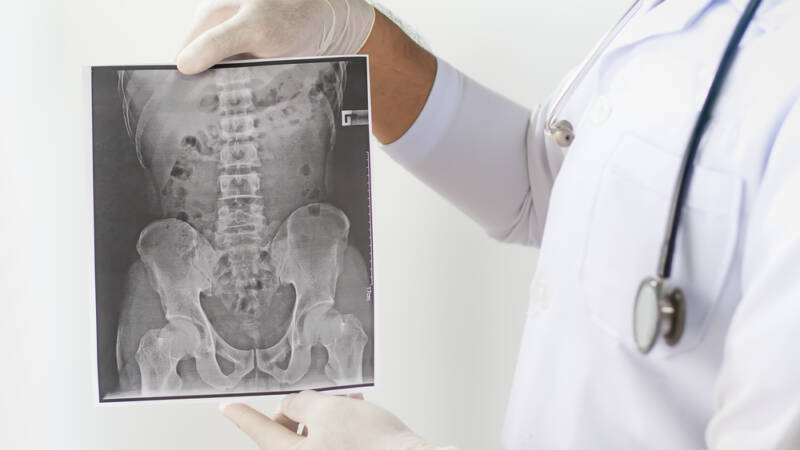Everything You Need To Know About Ankylosing Spondylitis

Ankylosing spondylitis is a chronic condition that causes long-term inflammation in the spine, which may calcify the ligaments in the spinal bones and fuse them over time. This process is called ankylosis and it implies mobility limitations, which is one of the most severe complications of this disease.
Ankylosing spondylitis (AS) is a rare type of arthritis, affecting up to 1.4 percent of the general population. A specific, inheritable gene is suspected to cause it.
Whether it’s you or someone you care for that’s living with the disease, and regardless of whether you’re dealing with a suspected diagnosis, new diagnosis or have been living with the condition for years now, knowledge is important. Search online and read on to learn more about AS.
What Is Ankylosing Spondylitis?
Ankylosing spondylitis is an inflammatory joint condition that usually starts in early adulthood, with most patients experiencing the first symptoms before 45 years old. It’s a progressive condition that primarily affects the spine and nearby joints like the hips, though the pain and the inflammation are known to spread.
AS often attacks the sacroiliac joints first, which explains why so many people with it suffer from low back pain in the early stages of the disease. It’s believed to be triggered by an abnormal response of the immune system.
Who Is At Risk?
While anyone can have a spondyloarthropathy, there are risk factors for ankylosing spondylitis more specifically.
Sex is one of them. Statistically, men are more prone to suffer from AS. They get it more frequently and symptoms are more aggressive and severe than in women. Their first symptoms also appear much earlier in life.
Age can be considered another risk factor if you take into account that most AS cases are diagnosed in people under 45 years old. If you’re older than 45 and you haven’t shown any symptoms yet, chances are that you won’t develop the condition in the future.
Genetics shouldn’t be ignored, as most people with AS are positive for the HLA-B27 marker, an antigen that’s believed to be the cause of abnormal activities in the immune system. Additionally, since the gene is more present in the Caucasian population, this is also a risk factor. It’s important to note that most people who have the gene do not develop the disease.
Signs and Symptoms
Pain and stiffness in the low back are the main symptoms of ankylosing spondylitis. They tend to happen after a long time of inactivity (for example, when you get out of bed in the morning). The pain might spread to the neck, hips, shoulders, knees, ankles, or even ribs, making it difficult to breathe deeply.
Other common symptoms include:
- Hunched postures and other spinal deformities
- Osteoporosis and microfractures
- Bloating, diarrhea or inflammatory bowel diseases
- Uveitis (eye inflammation)
- Fatigue
As the disease progresses, pain and stiffness are commonly found in:
- Areas where tendons and ligaments attach to bone
- The cartilage between the breastbone and ribs
- Hip and shoulder joints
If you have any of these symptoms, talk to your doctor immediately. They can assist you in determining a diagnosis.
Treatment Options
There is no cure for ankylosing spondylitis, but symptoms can be treated and the disease managed with analgesic and anti-inflammatory medication and lifestyle changes. Applying heat on the areas that ache and cold in the areas that swell can be helpful as well.
Physical therapy can slow down the progression of the disease by improving your posture, strength and flexibility. Talk to your doctor about what exercises could be beneficial.
If you’re having symptoms of ankylosing spondylitis, your family doctor may refer you to a rheumatologist. Physical exams, X-rays and lab tests can help them reach a diagnosis and find the best treatment for you.
Talk To Your Doctor
Ultimately, if you’re experiencing any of the symptoms of AS, it’s critical that you seek medical advice. Find a doctor that can test for AS or see you primary physician for a referral. They will be able to help you as you manage your health.